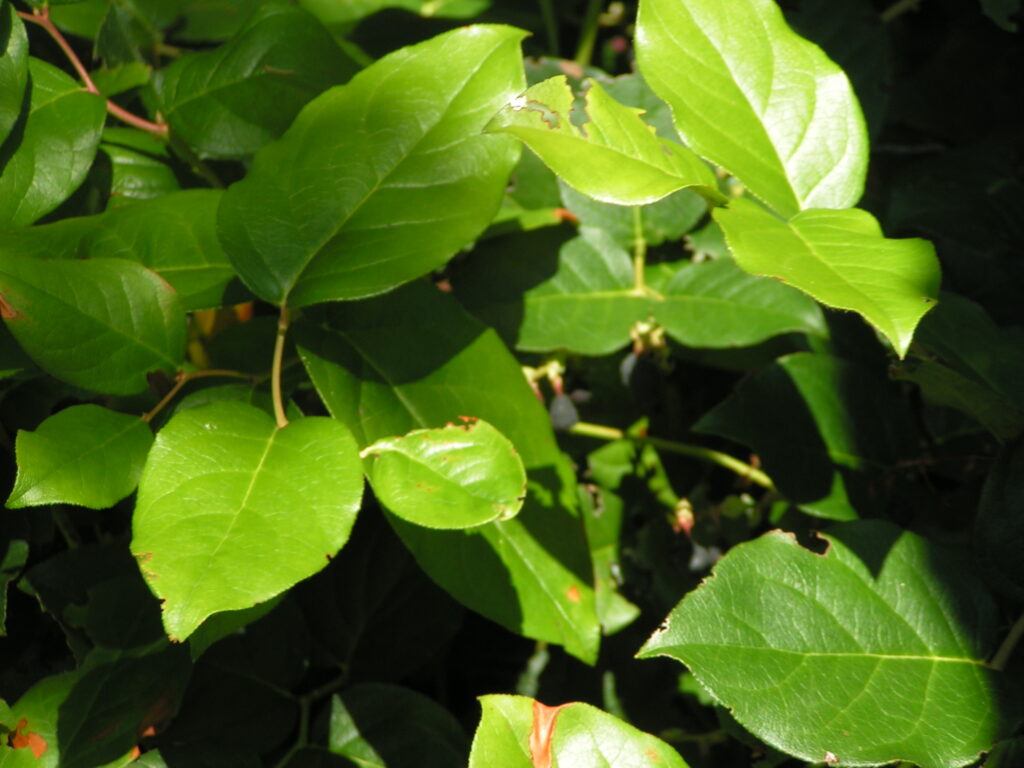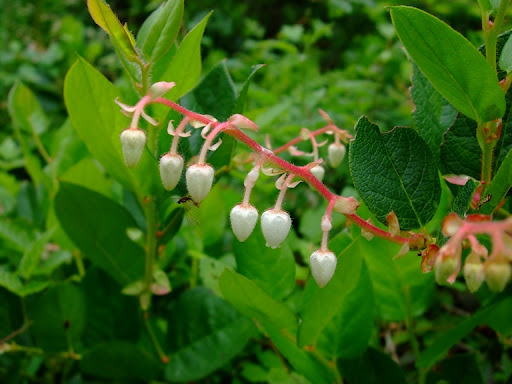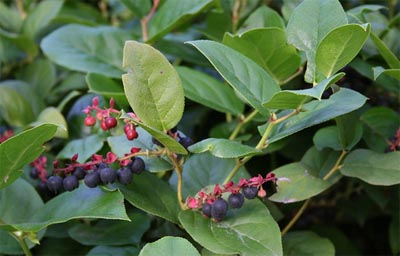WASKOWITZ
NATURE WALK
WASKOWITZ NATURE WALK
EXPLORE THE FORESTS OF WASKOWITZ
JUMP TO A STOP ON THE NATURE WALK
Stop 1 | Stop 2 | Stop 3
Stop 4 | Stop 5 | Stop 6
Stop 7 | Stop 8 | Stop 9
Stop 10
The stops above are points along the Camp Waskowitz Nature Walk, a family-friendly loop through beautiful evergreen forest. The walk is fairly flat, and slightly less than 1 mile long.
To start the Nature Walk, park in the Camp Waskowitz guest parking lot, and walk northwest (toward the open field). At the far end of the field, find the small wood picnic shelter, which marks the start of the trail and Stop 1.
Camp Waskowitz manages this 372-acre forest using silvicultural techniques that improve forest structure and wildlife habitat while preserving educational opportunities for youth and providing a sustained source of timber revenue that pays for the management of the forest.
Click on a link below to be directed straight to the information relevant to a particular stop. Or, scroll down to view the stops one by one. A printable PDF of the nature trail is available here.
Stop 1 | Stop 2 | Stop 3 | Stop 4 | Stop 5 | Stop 6 | Stop 7 | Stop 8 | Stop 9 | Stop 10
The stops below are points along the Camp Waskowitz Nature Walk, a family-friendly loop through beautiful evergreen forest. The walk is fairly flat, and slightly less than 1 mile long.
To start the Nature Walk, park in the Camp Waskowitz guest parking lot, and walk northwest (toward the open field). At the far end of the field, find the small wood picnic shelter, which marks the start of the trail and Stop 1.
Camp Waskowitz manages this 372-acre forest using silvicultural techniques that improve forest structure and wildlife habitat while preserving educational opportunities for youth and providing a sustained source of timber revenue that pays for the management of the forest.
Click on a link below to be directed straight to the information relevant to a particular stop. Or, scroll down to view the stops one by one. A printable PDF of the nature trail is available here with photos or here without photos.
Stop 1 | Stop 2 | Stop 3 | Stop 4 | Stop 5 | Stop 6 | Stop 7 | Stop 8 | Stop 9 | Stop 10
STOP #1: HUMANS IN THE FOREST
People have been living in this area for millennia including the nearby Snoqualmie tribe. The Snoqualmie People speak the Southern dialect (txʷəlšucid) of Lushootseed, and there are efforts to revitalize the language and culture.
The westside mountain forests provided―and continue to provide―shelter, food, water, medicine, and other important resources for indigenous peoples that call them home. In some areas of Washington tribes purposefully set fires in forests and meadows to encourage the growth of certain plants that were used for food, medicine, or weaving. Fires also improved hunting grounds, and kept plant diseases under control.
Euro-American settlers moved into the Pacific Northwest in the 19th century. Their methods of timber harvesting were usually not sustainable, and entire groves of old-growth trees hundreds of years old were logged for building materials and agricultural land.
Today, very few old-growth trees are left, but the young trees you see around you have the potential to become old-growth if managed carefully. One day these young forests may be towering giants, like those logged a hundred years ago.
ACTIVITY
What evidence of humans can you see? What can you hear?
TELL ME MORE ABOUT:
- The history of the Snoqualmie Tribe
- The names of common Pacific Northwest plants & animals in Lushootseed
- How large trees were felled and transported in the early days of the logging industry (video)
STOP #2: THINNING
After most of the old growth trees were cut down, many young trees began to grow in their place. In many areas across the Northwest, these trees are competing for limited resources, especially for water during the dry summer months.
In order to reduce competition between trees and make space for trees to grow bigger, areas like where you’re standing have been thinned, which means loggers have cut down some trees but left many standing to grow bigger. The extra space created between the trees allows more light to hit the forest floor, which helps establish a more diverse layer of understory plants. And because slightly fewer trees are competing for water, light, and nutrients, the trees that remain after the thinning can grow more robustly and quickly.
Left on its own, this forest would naturally thin itself, as some trees aren’t able to survive and die off while others mature into old-growth. The thinning done at Camp Waskowitz in 2020 is speeding that process along by making more room for trees to grow and invigorating the understory with more sunlight.
TELL ME MORE ABOUT:
STOP #3: FOREST SOILS
10,000 years ago, this area was covered by almost a mile of ice. Glacier sheets had moved down from Canada and were covering the entire area. When the glaciers retreated, they carved out valleys and left big boulders from when they were there. Can you see any boulders that may have been left by the glacier?
These days, glaciers are only found at high elevations, and rich soils cover the forest floor. Soils are complex mixtures of minerals, water, air, organic matter (decomposed living things). Even though soil may not be the first thing you notice in the forest, it really is the foundation of a healthy forest, and it is teeming with life. In fact, there are more organisms in a tablespoon of soil than there are people on earth!
These organisms, including bacteria and fungi, are constantly at work consuming and decomposing dead plants and animals that fall to the forest floor. As those things decompose, they fill the soil with nutrients that new plants need to grow and animals then consume — and the cycle begins again!
TELL ME MORE ABOUT:
STOP #4: FOREST LEVELS
Even though we sometimes think of a forest as one big piece of habitat, it’s probably more accurate to look at it as a series of distinct vertical layers of habitat, kind of like a cake that has multiple layers. From soil at the forest floor to the very tops of the highest trees, there are multiple layers of forest where different types of plants, animals, and insects live.
The bottom layer of the forest is called the forest floor, and all plants grow out of that layer. Many animals, like slugs, cougars, and rabbits, occupy this bottom layer of the forest.
Other animals, like sparrows and chipmunks mainly live on the low or middle layer of the forest — called the understory. The understory includes the many small shrubs you see around you, like salal and sword fern.
Finally, the upper layer of the forest is called the overstory, or the tree canopy. This top layer of the forest has one major type of plant: tall trees! Many bird species, including woodpeckers and nuthatches (birds), live primarily in this top layer of the forest.
Look out at the forest in one direction. Can you spot different layers of forest? Point out where you would mark the different layers of forest. Can you see animals or plants that are living only in certain layers? Are there some that exist in all layers?
TELL ME MORE ABOUT:
STOP #5: FOREST GAPS
As you can see, this section of the forest has a gap in the trees. Clearings like this are a natural part of Pacific Northwest forests. Gaps are can be created during windstorms, if a few trees in one area are blown down. Wildfire can also create gaps, if a fire burns trees in a one section of forest, and those trees die and fall down. Diseases, like root rot, can spread between trees in an area, and cause those trees to die and eventually fall down. Humans can also create gaps, through timber harvests.
Forest gaps are beneficial to Pacific Northwest forest plant and animal diversity. When a new gap is created, a lot of light suddenly hits a part of the forest floor that was previously shaded. The increased sunlight and space allows new young shrubs and trees to start growing. Those young plants attract a different set of animals that were there before the gap was created. For example, deer love to eat new young shrubs, which they will find more easily in a forest gap. Some types of forest flowers only grow when there is lots of sunlight, and those flowers attract specific types of butterflies and moths, which in turn attract birds. Eventually, this gap will fill in with trees, and a new gap will occur somewhere else in the forest.
Can you spot any plants in this gap that you didn’t see earlier on the trail? Are there any young trees starting to fill in this gap?
TELL ME MORE ABOUT:
STOP #6: OLD RIVERBED
100 years ago, this spot looked very different than it looks today. The original course of the Snoqualmie river ran right through where you’re standing. The higher banks on either side of you were the banks of the river. During the 1930s, the Civilian Conservation Corps created an earthen levee, which is a type of dam, and the river was re-routed. You’ll see where the river is now later on in the walk. The dam which was meant to control water level and reduce flooding. You can learn more about the Civilian Conservation Corps at the history installation near the Camp Waskowitz main building.
How does this area where the river used to run differ from the forest you were just walking in? Do the plant species look different? Do they look younger or older?
TELL ME MORE ABOUT:
STOP #7: WILDLIFE
We’re not alone in these woods. Many species call the forest home: hundreds that we can see and thousands that we cannot because they are too small, too fast, live underground, or are too wary of humans. The forest is full of fungi, bacteria, plants, and animals that interact through intricate food webs.
The biggest animals found in these forests are mammals like elk, cougar, and black bear. Elk are herbivores, which means they only eat plants, including some of the shrubs you see around you. Black bear are omnivores, which means they will eat both plants and meat. Cougars are carnivores, which means they eat only meat from animals like rabbit and deer.
Many animal species hop around in or fly through the tops of the trees, and never come down to the ground. Birds make nests on tree branches and in holes in trees, and raise their young there. Bats — which are the only flying mammals in the world — also like to hang out in holes in trees to raise their young or eat. If you’re here in the spring or summer, there are probably bats and birds in the trees above you right now!
What evidence of animals have you seen? Take a look around the ground for scat (animal poop), animals trails, and animal prints. Narrow trails that lead into the forest may be made by groups of deer as they browse for food.
If you were a tree, what kind of information would you want to share with your neighbor trees?
TELL ME MORE ABOUT:
- What mammals might I see in these woods
- What bird species I might see in this forest
- Forest bats of the Pacific Northwest
STOP #8: CEDAR
You’re now surrounded by one of the most important tree species in the Northwest, the Western redcedar. You may notice the forest looks a little different here – cedar trees have thick canopies that prevent water and sunlight from reaching the forest floor when they grow close together. They also like more acidic soil than most plants in the forest.
Western redcedar has been used for thousands of years by the tribes of the Pacific Northwest and British Columbia. Amazingly, various parts of the cedar tree, like the wood, the bark, and the leaves, have thousands of uses! We can’t list them all here, but some of the things made from cedar trees are: canoes and paddles, medicines, clothing, baskets, bows and arrows, tools, blankets, longhouses, musical instruments, and protective clothing for battle.
Walk up to a cedar close to you that has low-hanging branches, and smell the needles. How would you describe the smell?
TELL ME MORE ABOUT:
STOP #9: RIVER
You’ve been walking along the banks of the south fork of the Snoqualmie River. The river and the forest are linked in many important ways.
Rain that falls on the forest slowly drains into the river, and as the water moves through the forest it is being filtered, so that it is mostly free of unhealthy pollutants and sediment by the time it enters the river.
The river is home to thousands of organisms, big and small.
Dippers — which are America’s only aquatic songbird — hang out on rocks in the middle of the river and can dive completely under the water to forage for aquatic insects to eat.
Salmon that swim up this river toward spawning grounds are an important source of food for species like black bear.
Osprey perch on cedars next to the river and scout the water for fish to eat.
Where do you think the water in this river is coming from? Where is it going? Look at the banks of the river — does it look like the water level has gone higher than it is now? What might cause changes in the amount of water in the river?
TELL ME MORE ABOUT:
- How salmon and forests are linked through rivers
- How healthy forests are critical for water
- The unique and very cute American Dipper
STOP #10: UNDERSTORY
The forest’s lower layer, the understory, is the part of the forest we humans can most easily explore (since we can’t fly and we’re not that good at climbing trees). The understory consists of the plants that grow above the forest floor but below the tree canopy. Understory plants are one of the most important food sources for many forest birds and small mammals.
The understory alongside this trail includes species like salal (called t̕aqa in Lushootseed – click here for the pronunciation). Salal is a culturally important plant for many indigenous tribes, as its leaves and berries are used for medicine and food. Salal berries are a common food source for many understory animals, like chipmunks, squirrels, bear, and songbirds. Deer and elk like to browse on salal leaves.
From where you are standing, pick a tree about three car-lengths away. Walk toward the tree in a straight line and count how many different types of plants you pass that are within arm’s reach. Congratulations! You just did a basic plant survey.
TELL ME MORE ABOUT:



You’ve reached the end of the Camp Waskowitz Nature Walk. Share your photos of the walk on social media with the hashtag #Waskowitzwalk. Or, email them to us to be featured in the gallery below!
